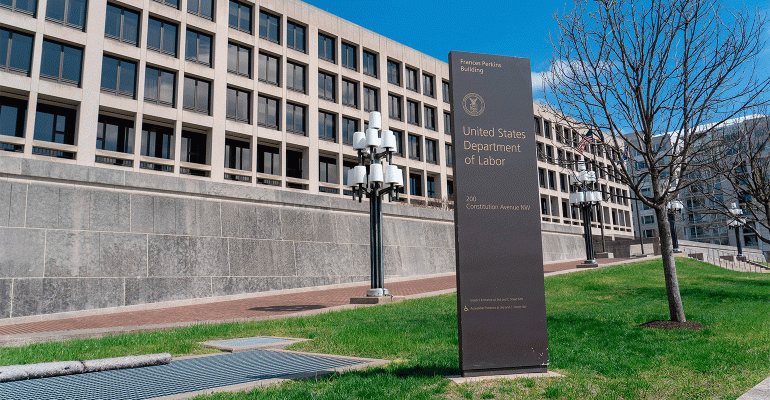Jobless claims hit another record last week as businesses large and small, forced to close or limit operations, laid off workers. Seasonally adjusted unemployment claims were over 6.6 million, the Department of Labor announced today. The previous week’s adjusted numbers came to 3.3 million, meaning over two weeks, nearly 10 million people have filed for unemployment.
“States continued to identify increases related to the services industries broadly, again led by accommodation and food services,” the Labor Department said. “However, state comments indicated a wider impact across industries.”
Across the country, newly unemployed Americans reported struggling to file claims as they experienced long waits, unanswered calls and website malfunctions at state unemployment offices.
“Similar to last week’s unemployment claims numbers, today’s report reflects the sacrifices American workers are making for their families, neighbors, and country in order to ‘slow the spread,’” said U.S. Secretary of Labor Eugene Scalia in a statement.
Efforts to “slow the spread” impact industries in vastly different ways, St. Louis Fed economist Miguel Faria-e-Castro wrote in a research paper posted last week.
“This negative shock does not equally affect all businesses, sectors or occupations,” the paper reads. “Many workers in professional services, for example, are able to work from home and continue their activities with minimal disruption. Others — who work in occupations that involve direct physical contact with customers, such as restaurant waiters — are likely to see their jobs affected by social-distancing measures.”
In the paper, Faria-e-Castro cited previous research on occupations that are at “high-risk” of layoffs. These positions “include occupations in sales, production, and food preparation and services, among others.” That research found that 66.8 million people are employed in occupations that are at high risk of layoff.
Faria-e-Castro combined this research and research on high-contact occupations, which includes barbers, hairstylists, food and beverage serving workers, and flight attendants, among others, which makes up about 27.3 million workers.
Faria-e-Castro then calculated an average of those workers and estimated a loss of just over 47 million positions in the second quarter of 2020.
There is support for these newly unemployed. The $2 trillion stimulus economic stimulus plan includes a Pandemic Unemployment Assistance program that expands federal benefits to those not traditionally eligible, including the self-employed, independent contractors and those with a limited work history. Benefits are available for those who are unemployed, partially unemployed or unable to work. It also adds $600 per week in benefits, on top of benefits already available under federal or state programs, for four months.
“Today’s unemployment number is devastating," said Sean Kennedy, executive vice president for public affairs for the National Restaurant Association in a statement. "We know that in the first three weeks of March, more than three million restaurant workers were laid off, and we believe that number could go as high as seven million people if the shutdown goes on for three months. We hope that provisions of the CARES Act will begin to help restaurants to bring their workers back on payroll and to keep the lights on. Even with this help the industry will struggle to survive. We are talking with Congress and the Administration about what restaurants will need in the long-term, including additional access to loans, tax stimulus measures and an intervention on Business Interruption Insurance claims denials.”
For our most up-to-date coverage, visit the coronavirus homepage.
Contact Gloria Dawson at [email protected]
Follow her on Twitter: @GloriaDawson





